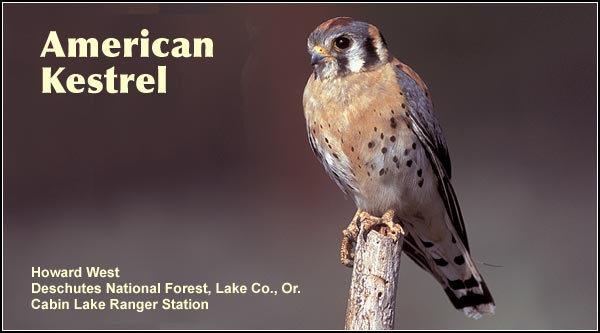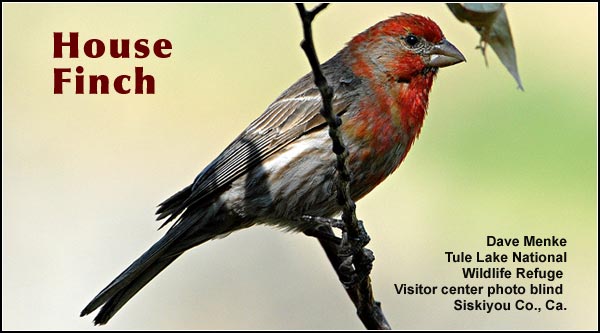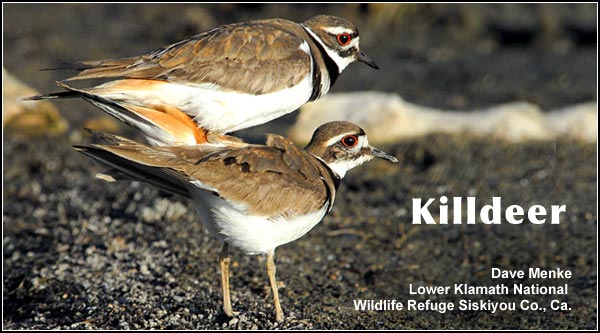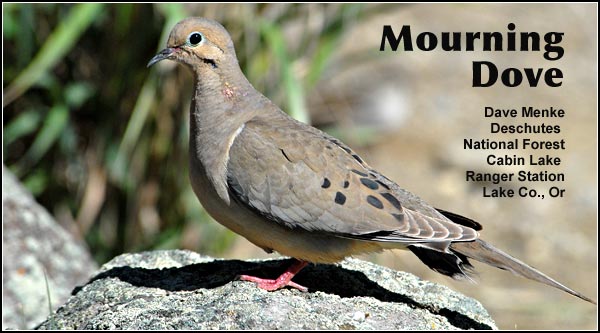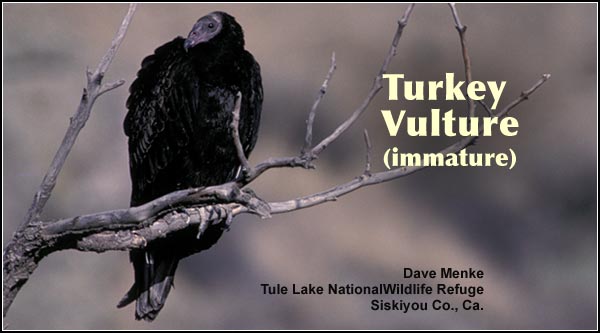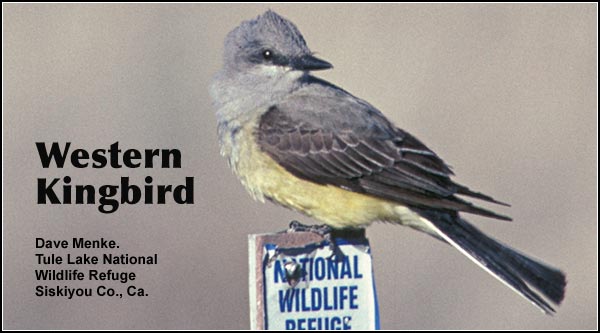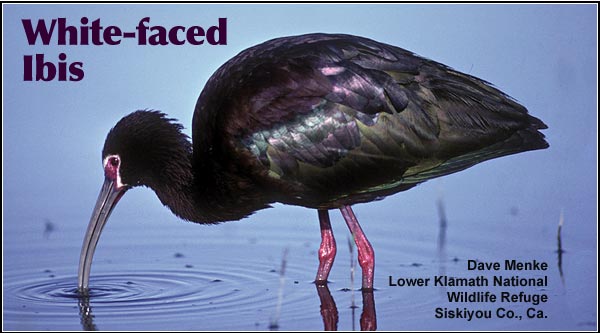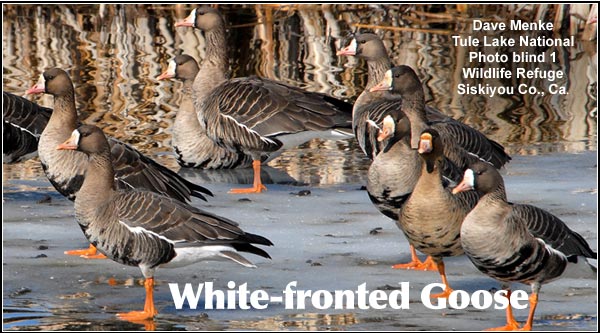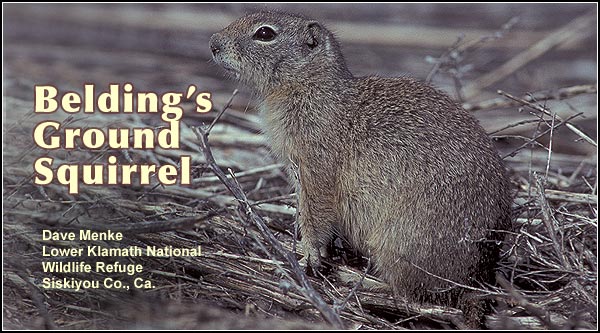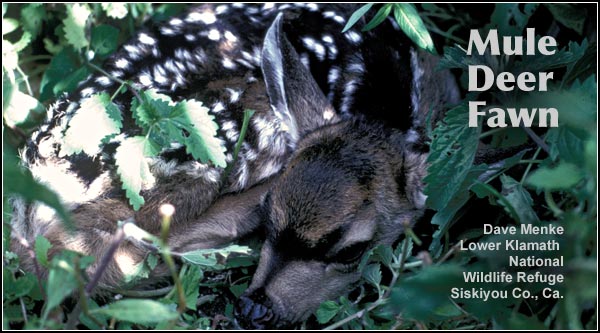The American Kestral is a small falcon in urban and agricultural areas as well as most
other upland habitats in the Upper Klamath and Tule Lake Basins. It is
often observed perched on roadside transmission lines.
American Robins are common year round in most upland habitats within the
Upper Klamath Basin watershed.
Barn Owls commonly nest in farm outbuildings. They also nest in cliff
crevices feeding on rodents found on farmland, pastures, grasslands and shallow
marshes during the hours of darkness.
Barn swallows are found in agricultural and residential areas during the summer.
This common swallow often builds its mud nest in the eaves of structures. It feeds
in flight over open fields and marshes.
Brewer’s blackbirds are found year round in a variety of agricultural and other upland habitats within the Upper Klamath and Tule Lake Basins. They are sometimes seen in large flocks with other blackbirds.
Canada geese feed ingrain stubble fields and pastures. During April, May
and June broods of goslings appear on wetlands throughout the Lower Klamath
and Tule Lake Basins.

Ravens are locally common in all upland habitats within the
Upper Klamath Basin watershed year round.
Golden-crowned sparrows are a common migrant in the spring and fall in the
Upper Klamath and Tule Lake Basins. Golden-crowned sparrows are often
seen and heard in residential areas and other upland brushy habitats.
Great blue herons are frequently seen in irrigation canals as well as other
wetland areas within the Upper Klamath Basin watershed. This species is common
most months with numbers decreasing in the winter.
Great horned owls are found in both residential and agricultural areas as well
as other upland areas in Upper Klamath and Tule Lake Basins. This large owl
is most often “observed” by hearing its call during hours of darkness.
Horned larks are observed primarily in the winter months in open fields
and along roads. This species is present in the Upper Klamath Basin
watershed year round.
House Finches are common year round in a variety of upland habitats within
the Upper Klamath and Tule Lake Basins. It is readily attracted to bird feeders.
House wrens are observed in the spring, summer and fall in upland habitats
throughout the Upper Klamath Basin watershed. They nest in tree cavities and
nesting boxes.
Killdeer nest in open areas; usually in pastures or other locations with
low, sparse vegetation. This is a common species in the Upper Klamath Basin
watershed with numbers declining during the mid winter months.
Mourning Doves fairly widespread in agricultural lands and other upland
locations throughout the Upper Klamath Basin watershed. It is common most
of the year with reduced numbers during the winter months.
Red-tailed hawks, by far, are the most common hawk in the Upper Klamath Basin
watershed. Red-tailed hawks may be observed year round in all habitats.
Pheasants are seen year round in several habitats in the Upper Klamath Basin
watershed. This species is most commonly observed in or near agricultural
areas where there is adequate nearby cover.
Ross’s geese feed in grain stubble fields near expanses of open water during
the late fall and early spring. Klamath Wildlife Area, Tule Lake and Lower Klamath
Refuges are good areas to observe migrating geese.
Savannah sparrows are seen most often in areas of tall grass and
brush during the summer months.
Red-winged blackbirds are abundant throughout the year in most habitats
within the Upper Klamath and Tule Lake Basins. During the late fall and winter
flocks of thousands are sometimes observed near crop and pasture land.
Starlings are a non-native species and are common in widespread areas of the
Upper Klamath and Tule Lake Basins. Starlings adapt well to human activity
and development and are often seen near buildings.
Turkey vultures may be seen in most upland habitats in the Upper Klamath Basin watershed.
This species is observed primarily in the summer months over open ground or marshes.
Western Kingbirds breed during the summer in the Upper Klamath Basin watershed.
They nest in trees and sometimes perch on transmission
lines or in other conspicuous locations.
White-Faced Ibis are observed mostly in the southern portions of the Upper Klamath
and Tule Lake Basins during the months of May through September. They
feed in flooded pastures and shallow wetlands and nest in large expanses of
dense cattail and bulrush marsh.
White-fronted geese feed in agricultural fields with nearby expanses of open
water during the fall and early spring. Tule Lake and Lower Klamath Refuges are
prime locations to observe large flocks of migrating white-fronted geese.
Coyotes are common in agricultural areas as well as most other upland habitats
in the Upper Klamath and Tule Lake Basins.
Belding’s Ground Squirrels are most often seen in farm fields, grass lands and
pastures where they can damage crops as hundreds of squirrels may be found
in a single field. It inhabits dry upland areas in the Klamath and Tule Lake Basins.
Mule deer are very common and widespread in all upland and shallow water habitats
in the Upper Klamath and Tule Lake Basins.
Mule Deer are fairly widespread in agricultural lands and other upland
locations throughout the Upper Klamath Basin watershed. It is common most of the
year with reduced numbers during the winter months.
Raccons often live close to humans. It is fairly common and widespread
throughout the Upper Klamath Basin watershed.
Western Fence Lizard is a common lizard that may be found in dry
upland locations in the Upper Klamath Basin watershed. It is seen mostly in
brushy areas, near buildings and at sites with exposed rock outcropping.
To see more photos of cropland and pasture species
 Riparian Habitat is located along the shoreline of rivers, lakes and wetlands within the Upper Klamath Basin watershed. Vegetation found in riparian habitats includes deciduous trees such as willow, cottonwood and aspen which are found along the shore lines of these water bodies. Many bird species use riparian habitats as travel corridors during the spring and fall migrations. Other birds may use riparian locations as favored sites for nesting and breeding.
Riparian Habitat is located along the shoreline of rivers, lakes and wetlands within the Upper Klamath Basin watershed. Vegetation found in riparian habitats includes deciduous trees such as willow, cottonwood and aspen which are found along the shore lines of these water bodies. Many bird species use riparian habitats as travel corridors during the spring and fall migrations. Other birds may use riparian locations as favored sites for nesting and breeding.
 Deep water and permanent marshes are found in the Upper Klamath and Tule Lake Basins. Habitat includes Klamath, Williamson, Wood, Sprague, and Lost Rivers; Upper Klamath , Clear and Tule Lakes, many smaller deep wetlands
Deep water and permanent marshes are found in the Upper Klamath and Tule Lake Basins. Habitat includes Klamath, Williamson, Wood, Sprague, and Lost Rivers; Upper Klamath , Clear and Tule Lakes, many smaller deep wetlands
and permanent marshes. Fish eating species such as grebes, pelicans, gulls, terns and diving ducks use these wetlands. The vegetation growing in these wetlands
(primarily cattail and bulrush stands which are also called “tules”) provide habitat for rails, white-faced ibis, egrets, herons, yellow-headed black birds to name only a few.
![]()
Juniper/Sagebrush habitat is found most extensively in the southern and eastern portions of the Upper Klamath Basin watershed. Both the Clear Lake area and Lava Beds National Monument have large expanse of this habitat. Plants found here include Western Juniper and several plants collectively known as sagebrush and rabbit brush.
 Abundant shallow wetlands are found in the Upper Klamath and Tule Lake Basins. These wetlands have historically had water during the winter and spring, but tended to dry out during the summer and fall. Today, most wildlife areas and
Abundant shallow wetlands are found in the Upper Klamath and Tule Lake Basins. These wetlands have historically had water during the winter and spring, but tended to dry out during the summer and fall. Today, most wildlife areas and
refuges manage seasonal wetlands using water control structures to mimic this yearly wet and dry cycle. Wading shorebirds and dabbing ducks are among the diverse wildlife species commonly seen in seasonal marshes and wetlands.
![]() High Elevation habitat are forests above 5,500 feet in the Upper Klamath and Tule Lake Basins consisting primarily of Douglas fir, western red cedar and true firs. These habitats are found mostly in the Cascade and Siskiyou mountains. Popular travel destinations with these habitats include Crater Lake National Park, Medicine Lake, Lake of the Woods and the Pacific Crest Trail. Wildlife species found in mountain meadows, streams and lakes as well as those seen above timberline are included in this habitat grouping.
High Elevation habitat are forests above 5,500 feet in the Upper Klamath and Tule Lake Basins consisting primarily of Douglas fir, western red cedar and true firs. These habitats are found mostly in the Cascade and Siskiyou mountains. Popular travel destinations with these habitats include Crater Lake National Park, Medicine Lake, Lake of the Woods and the Pacific Crest Trail. Wildlife species found in mountain meadows, streams and lakes as well as those seen above timberline are included in this habitat grouping.
![]() Ponderosa and Lodgepole Pine habitat are usually found above juniper/sagebrush vegetation and at a lower elevation than Douglas fir and true fir habitats within the Upper Klamath Basin watershed. Many cavity nesting bird species use the Ponderosa/lodgepole pine habitat, particularly where past fires have created openings and dead snags. Several species of woodpeckers, nuthatches and flycatchers are commonly observed within this habitat.
Ponderosa and Lodgepole Pine habitat are usually found above juniper/sagebrush vegetation and at a lower elevation than Douglas fir and true fir habitats within the Upper Klamath Basin watershed. Many cavity nesting bird species use the Ponderosa/lodgepole pine habitat, particularly where past fires have created openings and dead snags. Several species of woodpeckers, nuthatches and flycatchers are commonly observed within this habitat.
Presented by Dave Menke, Anders Tomlinson, Howard West and anderstomlinson.com/tule-lake/.
©2014 Anders Tomlinson, all rights reserved.

